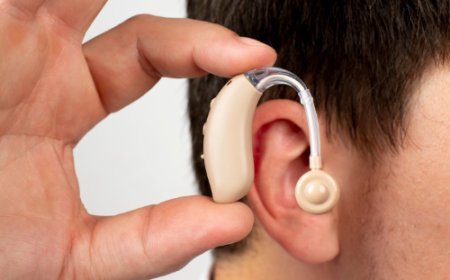Skeletal Muscle Relaxants: What They Are and How They Work

Introduction
Muscle pain, spasms, and stiffness can be debilitating, affecting daily activities and quality of life. For individuals suffering from these issues, skeletal muscle relaxants are often prescribed to provide relief. But what exactly are skeletal muscle relaxants? How do they work, and when should they be used? This comprehensive guide answers these questions and explores the benefits, types, uses, and potential side effects of skeletal muscle relaxants.
What Are Skeletal Muscle Relaxants?
Skeletal muscle relaxants are a class of medications used to reduce muscle tone and relieve muscle spasms. Unlike analgesics, which target pain alone, muscle relaxants address the underlying muscle tightness or spasticity that causes discomfort. These drugs work by depressing the central nervous system or directly affecting skeletal muscle function.
There are two primary categories of muscle relaxants:
-
Centrally Acting Muscle Relaxants: These work through the central nervous system to reduce muscle spasms.
-
Direct-Acting Muscle Relaxants: These act directly on the muscle fibers themselves to reduce tension and contractions.
How Do Skeletal Muscle Relaxants Work?
Skeletal muscle relaxants function by disrupting the pain-spasm-pain cycle. When a muscle spasms, it causes pain. This pain in turn causes more muscle contractions, which creates a cycle. Muscle relaxants intervene by calming the nerves or muscles involved.
Mechanism of Action:
-
Centrally Acting Relaxants: They inhibit neuronal transmission in the brain and spinal cord. Medications like carisoprodol, cyclobenzaprine, and metaxalone fall into this category.
-
Direct-Acting Relaxants: The most well-known is dantrolene, which interferes with calcium ion release from the sarcoplasmic reticulum in muscle cells, leading to muscle relaxation.
Common Conditions Treated with Skeletal Muscle Relaxants
Muscle relaxants are often prescribed for a range of conditions that involve muscle spasms or spasticity. These include:
-
Acute back or neck pain
-
Fibromyalgia
-
Multiple sclerosis (MS)
-
Cerebral palsy
-
Spinal cord injuries
-
Tension headaches
-
Muscle strains and sprains
Popular Skeletal Muscle Relaxants and Their Uses
Here are some commonly prescribed skeletal muscle relaxants:
-
Carisoprodol (Soma)
-
Treats acute musculoskeletal pain
-
Typically used for short-term therapy
-
Can cause drowsiness and dependency with prolonged use
-
-
Cyclobenzaprine (Flexeril)
-
Effective for muscle spasms due to acute musculoskeletal conditions
-
Often prescribed for conditions like back pain and fibromyalgia
-
-
Methocarbamol (Robaxin)
-
Used for relieving muscle pain and discomfort
-
Often prescribed post-surgery or for traumatic injuries
-
-
Tizanidine (Zanaflex)
-
Particularly effective in managing spasticity related to MS or spinal cord injury
-
Can cause sedation and hypotension
-
-
Baclofen (Lioresal)
-
Used in the treatment of spasticity, especially due to MS and spinal cord damage
-
Acts on GABA receptors to inhibit nerve transmission
-
-
Dantrolene (Dantrium)
-
A direct-acting relaxant
-
Used in severe cases of spasticity and malignant hyperthermia
-
Benefits of Skeletal Muscle Relaxants
The primary benefit of skeletal muscle relaxants is their ability to provide rapid relief from muscle spasms, allowing patients to rest and heal. Additional benefits include:
-
Improved mobility
-
Decreased pain and discomfort
-
Reduced muscle tension
-
Better sleep quality
Side Effects and Risks
While effective, skeletal muscle relaxants are not without side effects. Common side effects include:
-
Drowsiness
-
Dizziness
-
Dry mouth
-
Fatigue
-
Nausea
-
Headache
Serious Risks:
-
Dependency and Abuse: Especially with carisoprodol
-
Withdrawal Symptoms: If stopped abruptly
-
Liver Damage: Especially with long-term use of drugs like tizanidine
-
Interactions: With alcohol, opioids, or other CNS depressants
Who Should Avoid Muscle Relaxants?
Muscle relaxants may not be suitable for everyone. People with the following conditions should consult their doctor before using these medications:
-
Liver or kidney disease
-
History of substance abuse
-
Pregnant or breastfeeding women
-
Elderly individuals (due to higher risk of sedation and falls)
Read More: https://buymedlife.com/blog/what-is-pain-o-soma-and-how-does-it-work-for-muscle-pain-relief
Best Practices for Safe Use
To use skeletal muscle relaxants safely, follow these guidelines:
-
Use Short-Term: Most are recommended for short-term use (2-3 weeks).
-
Avoid Alcohol and Sedatives: To prevent excessive drowsiness.
-
Don’t Drive or Operate Machinery: Until you know how the medication affects you.
-
Follow Dosage Instructions: Never increase or decrease your dose without a doctor's advice.
-
Monitor for Side Effects: Report any unusual symptoms to your healthcare provider.
Alternatives to Skeletal Muscle Relaxants
In some cases, non-drug therapies may offer similar relief:
-
Physical therapy
-
Massage therapy
-
Acupuncture
-
Hot and cold therapy
-
Exercise and stretching
-
Over-the-counter NSAIDs like ibuprofen
Conclusion
Skeletal muscle relaxants play a vital role in managing muscle pain, spasms, and spasticity. While they offer quick relief, they should be used responsibly and under medical supervision to avoid side effects and dependency. By understanding how these medications work, their benefits, and their risks, patients can make informed decisions about their treatment options. Always consult your healthcare provider before starting or stopping any muscle relaxant.
Whether you're dealing with chronic back pain, recovering from an injury, or managing a neurological condition, skeletal muscle relaxants can be a valuable part of your pain management plan when used safely and effectively.
What's Your Reaction?




























































